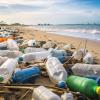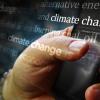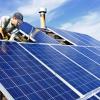
Amid deep disruption and uncertainty caused by the COVID-19 pandemic, a surge in well-designed energy policies is essential in forging a resilient energy system equipped to meet global climate goals as well as air quality standards.
It has been a tumultuous year for the global energy system. The COVID-19 crisis has caused more disruption than any other event in recent history, leaving scars that will last for years to come. Whether this upheaval, however, ultimately helps or hinders efforts to accelerate clean energy transitions and reach international energy and climate goals will depend on how governments respond to today’s challenges.
The World Energy Outlook 2020, the International Energy Agency’s (IEA) flagship publication, explores different pathways out of the crisis focusing on the next 10 years. IIASA researchers contributed to the latest issue by quantitatively assessing the energy projections developed by the IEA in terms of concentrations of key air pollutants and the corresponding adverse health impacts. According to the IIASA team, establishing a clear understanding of how air pollution emissions and health impacts resulting from poor air quality correlate with the outlined IEA scenarios remains critical to the provision of informed policymaking in many countries.
Among other findings, the new report provides the latest IEA analysis of the pandemic’s impact: global energy demand is set to drop by 5% in 2020, energy-related CO2 emissions by 7%, and energy investment by 18%. The Outlook’s established approach – comparing different scenarios that indicate how the energy sector could develop – is more valuable than ever in these uncertain times. The key message is sobering: not enough is being done to help put the world on track to meet sustainable development goals.
“The current development of air quality policies alone would not guarantee a significant drop in emissions or premature deaths. If we want to achieve clean air in terms of lowering the concentrations of pollutants and attaining the World Health Organization (WHO) or national air quality standards, we need to combine air quality policies with climate policies, and also policies that achieve access to clean energy,” explains IIASA Air Quality and Greenhouse Gases Program researcher, Peter Rafaj.
“Currently about 6 million people die prematurely per year due to ambient and indoor air pollution, and the global trend until 2030 is increasing. Our assessment of the IEA projections shows that if more Sustainable Development Goals (SDG) domains are activated, nearly 12 million premature deaths would be avoided cumulatively over the next ten years. There must be coordinated policy action targeting the issue from multiple directions,” he says.
 © IIASA
© IIASA
The impacts of COVID-19 are far-reaching, yet some of them have led to positive environmental changes. One such example is the reductions seen in air pollution across many parts of the globe. However, these declines were only temporary, and once lockdowns ended, levels of air pollutants bounced back to concentrations comparable with last year, and in some areas of the world, even higher. Many of the short-term improvements in air quality due to lockdowns were not only quickly wiped out, but also came at a great cost to the wellbeing of citizens and the health of the global economy. It is clear we should not rely on global pandemics to bring about long-lasting positive environmental change. What is needed instead are more systemic and deep-rooted transformations.
“Despite a record drop in global CO2 emissions this year, the world is far from doing enough to put them into decisive decline. The economic downturn has temporarily suppressed emissions, but low economic growth is not a low-emissions strategy – it is a strategy that would only serve to further impoverish the world’s most vulnerable populations,” notes IEA Director Fatih Birol.
A step-change in clean energy investment offers a way to boost economic growth, create jobs, and reduce emissions. Other efforts would also have to focus on reducing emissions from existing energy infrastructure such as coal plants, steel mills, and cement factories, in the years to come. In the absence of such changes to tackle these “locked-in” emissions - and regardless of actions to promote growth in clean energy - international climate goals will be pushed out of reach.
Adapted from a press release prepared by the International Energy Agency.
Further information
News

28 June 2024
Drowning in waste: pollution hotspots in aquatic environments

27 June 2024
What can social media tell us about public views on climate change?

21 June 2024
